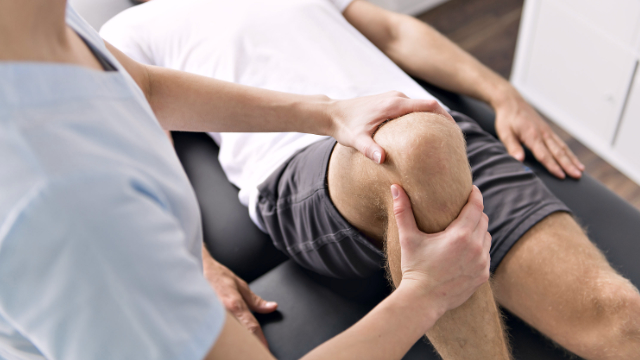
We distribute newsletters every week to educate you—our patients—on some of the most common injuries and conditions that we treat, and to explain why we always recommend seeing a physical therapist first when dealing with any type of pain. In working towards this goal, we also regularly summarize research studies that show how physical therapy typically leads to the best possible outcomes, and how it helps patients avoid surgery and other costly or unnecessary treatments in the process.
With the end of the year approaching, we’d like to look back at some of our favorite study summaries of 2019 in a four—part newsletter series with each one focusing on a different topic or region of the body. In part 4, we review research on physical therapy for arthritis and sports injuries, and how it compares to opioids for pain.
Arthritis
Arthritis is a term used to describe over 100 conditions involving inflammation of one or more joints, leading to pain and stiffness in those regions. It represents one of the most common causes of disability nationwide, as about 54 million Americans—or 23% of the population—currently have some type of arthritis. The majority of these individuals have osteoarthritis (OA), which occurs when protective cartilage in joints gradually wears away, but other forms of arthritis—like rheumatoid arthritis and juvenile arthritis—must also be recognized.
- Background: OA frequently affects the knees because they are weight—bearing joints that withstand significant loads from the rest of the body; exercise is generally regarded as one of the most effective treatments for these patients, but it’s not clear if delivering this through supervised physical therapy is necessarily better than self—instructed exercise
- How the study was conducted: researchers analyzed the results of an original study in which 159 patients with knee OA either completed physical therapy or followed an internet—based exercise training (IBET) program
- What the results showed: for the physical therapy group, a higher number of treatment sessions was associated with better overall outcomes for up to 12 months, and the greatest improvements were found in those who attended 6—8 sessions; for the IBET group, more frequent use of the website did not lead to any significant improvements for patients
- Take—home message: there appears to be a much better response to exercise treatments for knee OA when it’s guided by a physical therapist rather than led by online instructions, and more therapy visits leads to improved results; patients with this condition should therefore consult with a physical therapist to initiate an exercise therapy program
Sports injuries
Although the rate varies widely from one sport to the next, all sports carry a certain risk for injury due to their physical toll from contact, collisions, and pushing the body too far. About 8.6 million sports— and recreation—related injuries occur each year, meaning that about 34 injuries occur for every 1,000 individuals participating in sports. Sports injuries are most common between the ages of 5—24, but they can occur in athletes of any age.
- Background: injuries to the hamstrings—a group of three muscles located in the back of the thigh—are extremely common in many sports; the Nordic hamstring exercise strengthens these muscles and may reduce the risk for injury in various sports, but more research is needed to clearly show this
- How the study was conducted: a systematic review and meta—analysis was conducted, which analyze the results of all available research on a topic; 15 studies were included, which evaluated programs in which the Nordic hamstring exercise was performed to prevent hamstring injuries
- Results: exercise programs that included the Nordic hamstring exercise significantly reduced the incidence of hamstring injuries by up to 51%, and the reduction was found in athletes participating in multiple sports and at different levels of competition
- Take—home message: regularly performing a single exercise in addition to movement—based techniques can help individuals avoid a hamstring injury in many sports; therefore, it’s recommended that athletes visit a physical therapist for an injury—prevention program that will help reduce their risk
Opioids
Opioids are powerful pain—relieving medications that come with a high risk for overuse and abuse. Every day, about 130 Americans die from an opioid—related overdose, which is about 45,000 deaths related to opioids in 2017. Physical therapy is a much safer alternative to opioids for pain, and in many cases it can help patients avoid the need for a prescription altogether.
- Background: although physical therapy is commonly recommended for low back pain (LBP), many patients either receive after a delay or not at all, and others may be prescribed opioids for their pain instead
- How the study was conducted: a systematic review was conducted, which is a comprehensive study that interprets the findings from similar research on the same topic; 11 studies were included, all of which assessed the use of healthcare services—like opioids—in LBP patients that either received early physical therapy, physical therapy after a delay, or usual care (which didn’t include any physical therapy)
- What the results showed: early physical therapy was associated with reduced use of healthcare services compared to delayed physical therapy, as patients spent less on care and had a lower risk for being prescribed opioids, having advanced imaging tests, or visiting the emergency department
- Take—home message: since starting physical therapy early can help patients with LBP avoid opioids and spend less on their treatments compared to waiting or getting non—physical therapy treatments, individuals with this condition are advised to make an appointment with a physical therapist
